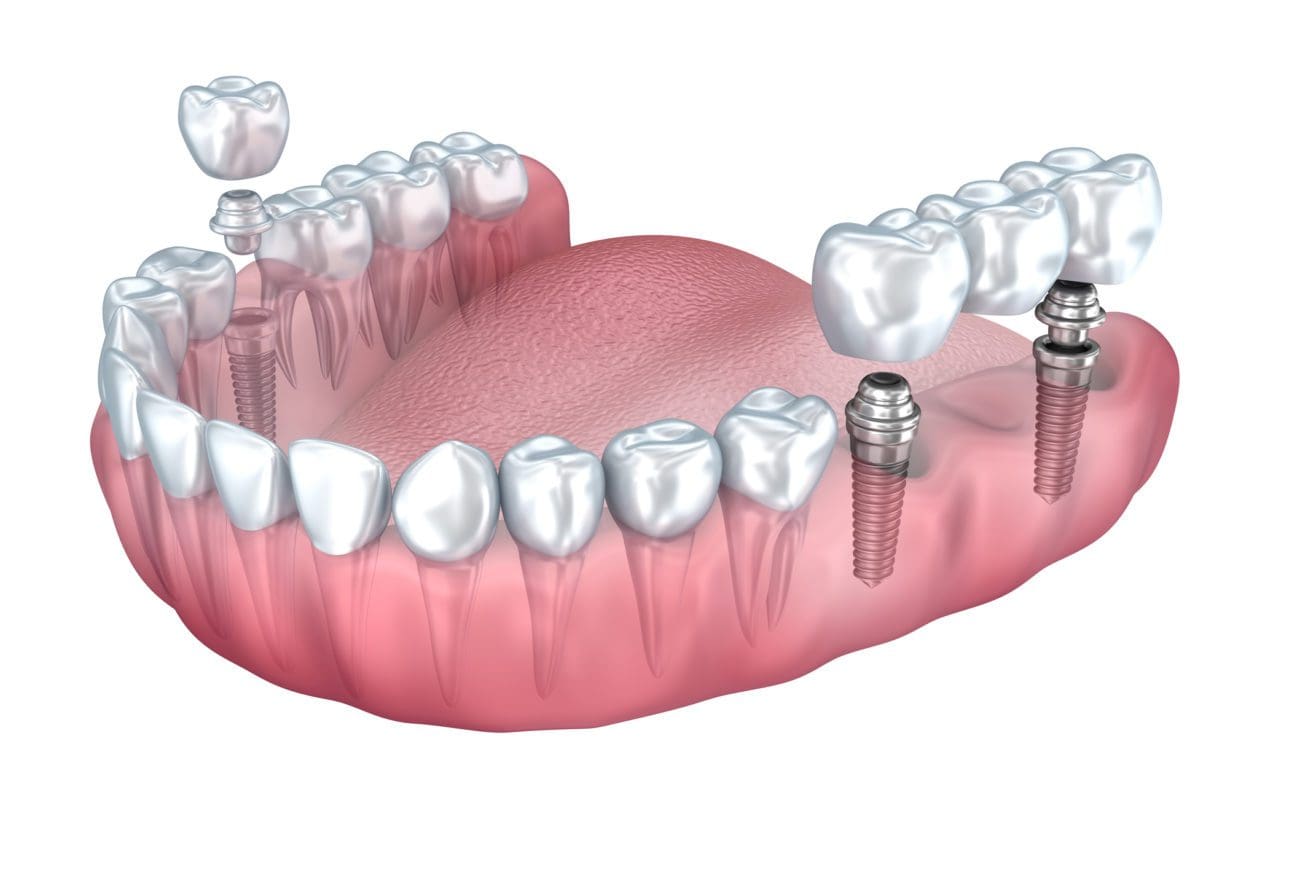Getting My Dental Sense To Work
Getting My Dental Sense To Work
Blog Article
Dental Sense Fundamentals Explained
Table of ContentsAn Unbiased View of Dental SenseThe Buzz on Dental SenseThe 6-Second Trick For Dental SenseNot known Details About Dental Sense
are medical devices surgically dental implanted into the jaw to bring back a person's ability to eat or their appearance. They supply assistance for fabricated (phony) teeth, such as crowns, bridges, or dentures. When a tooth is lost due to injury or condition, a person can experience complications such as quick bone loss, malfunctioning speech, or adjustments to chewing patterns that result in pain.Oral implant systems contain an oral implant body and oral implant joint and might likewise consist of a joint addiction screw. Root canal procedure. The oral implant body is surgically put in the jawbone instead of the tooth's root. The dental implant joint is usually affixed to the implant body by the joint fixation screw and extends via periodontals into the mouth to sustain the affixed fabricated teeth
(https://www.behance.net/matthewmusic)Structure of The Dental Implant System selecting dental implants, speak with your oral service provider regarding the possible advantages and dangers, and whether you are a candidate for the treatment. Points to consider: Your total wellness is a vital consider establishing whether you are an excellent candidate for oral implants, just how long it will take to recover, and exactly how long the implant may remain in location.
Smoking cigarettes might impact the healing procedure and reduce the long-lasting success of the implant. The healing procedure for the dental implant body may take several months or longer, during which time you usually have a short-term joint in area of the tooth. the dental implant treatment: Very carefully comply with the oral health directions provided to you by your oral copyright.
Top Guidelines Of Dental Sense
Implant failing can result in the demand for another medical treatment to fix or change the implant system. Recovers the ability to eat Restores aesthetic appearance Aids keep the jawbone from reducing as a result of bone loss Protects the health of the surrounding bone and gums Aids keep adjacent (close-by) teeth steady Boosts quality of life Damages to surrounding all-natural teeth during implant positioning Injury to the surrounding cells throughout surgical treatment, such as sinus opening Injury during surgery (for instance, crack of bordering jawbone) Inadequate function, such as seeming like the teeth do not attack with each other typically A feeling that the tooth hangs or turning in position resulting from a joint screw loosening up Implant body failing (looseness of the dental implant body) due to systemic infection, which might be much more most likely in patients with unchecked diabetes mellitus as a result of regional infection in bone and periodontals sustaining the implant body because of postponed healing, which may be a lot more most likely in patients that smoke Trouble cleaning up the periodontals around the dental implant, resulting in poor oral hygiene Without treatment gum illness Post-surgical numbness because of nerve impingement or damage visit this site right here Always notify health care carriers and imaging professionals that you have oral implants prior to any type of magnetic resonance imaging (MRI) or x-ray procedures.
FDA is not familiar with any negative occasions reported for MRI or x-ray procedures with dental implants. Dental implants systems are typically constructed from materials that follow worldwide agreement criteria of the International Company for Standardization (ISO) or ASTM International. These requirements have information of what makes a risk-free product.

An oral implant is a framework that changes a missing out on tooth. With screw-like gadgets, the doctor inserts an implant into the jawbone, and it acts as an anchor for a synthetic tooth, called a crown.
Rumored Buzz on Dental Sense
Some individuals are not eligible for oral implant surgical procedure. It is for dental doctors to operate on individuals with: severe illnessuncontrollable metabolic diseasebone or soft tissue condition or infectionIf these problems are fixed, an individual can have the surgical procedure. In, oral cosmetic surgeons avoid running on individuals with: If people with any of the above go through dental implant surgical procedure, there is a greater threat of the implant stopping working.

Dental implant surgical procedure is a tailored procedure. It's not the same for everybody. The adhering to offers a basic overview of what you can expect your dental expert, dental specialist, periodontist or prosthodontist to do: Position the implant operatively. Give you time to heal. Connect the message and final crown, bridge or denture.
Next, your specialist will carefully place the oral implant right into your jaw. If your implant is near the front of your mouth, your dentist will certainly make a short-lived tooth for you to use until you heal.
The Main Principles Of Dental Sense
Your service provider can tell you what to anticipate in your situation. Throughout the recovery phase, your jawbone should fuse to the dental implant. This process, called osseointegration, is essential for stability and long-term success. This process can take anywhere from 3 to nine months. In some cases, it may take much longer.
Once your implant heals, your dental practitioner can connect the abutment (small port message) and your last remediation (crown, bridge or denture). This typically takes regarding one hour to finish and might need a second minor surgical treatment. You should not feel any kind of discomfort during your dental implant treatment because your copyright will utilize medicine to numb your gum tissues.
Report this page